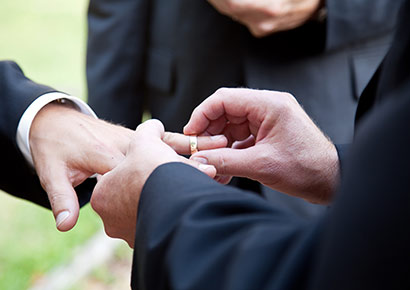Opinion | The trouble with making LGBTIAQ people live on heterosexuals’ terms
 Heteronormativity has become a familiar word in debates around gender and sexuality. It’s a concept developed by social theorist Michael Warner in 1991, and refers to the heterosexual experience being positioned as the only “normal” way to be or live.
Heteronormativity has become a familiar word in debates around gender and sexuality. It’s a concept developed by social theorist Michael Warner in 1991, and refers to the heterosexual experience being positioned as the only “normal” way to be or live.
When that happens, it renders any experience that doesn’t fit that mould as “other”. This othering can take the form of social and economic exclusion, violence – often state sanctioned – imprisonment and even death. It enforces the gender binary and its accompanying gender stereotypes.
In this way it not only hurts those who aren’t heterosexual. It also harms those who are by limiting the options available to them. For instance, heterosexual men are expected to perform their gender in a particular way, being strong and muscly, emotions in check, and unlikely to explore a greater range of emotions that may be deemed too feminine lest they be thought of as “not a real man”.
But what about the flip side of this binary: homonormativity? This takes Warner’s idea and applies it to same sex couples, imposing a template for performing “homosexual” identity. This template asks gay and lesbian people to ascribe to heterosexual social expectations. They must show themselves to be “just like straight people” to gain access to the same or similar rights and social privileges. These include, for example, the right to marry, adopt children, and enjoy spousal benefits.
There is nothing wrong with the desire to have your relationship recognised by the state, to adopt children or have your partner access benefits such as medical aid or insurance. But it becomes a problem when it’s presented as the only way of existing as either a lesbian, gay, bisexual, transgender, intersex, asexual or queer (LGBTIAQ) person in the world.
When this happens, exclusion follows. Those who don’t fit the norm are shut out of social spaces and their issues don’t receive the same amount of attention when it comes to advocacy work or lobbying. Their rights and needs are ignored or deemed not significant enough. This can be extremely dangerous, too. Homonormativity, like heteronormativity, privileges certain lives over others and makes it possible for society to overlook hate crimes against queer and transgender people.
Patriarchy internalised
In South Africa, where I live and conduct my research, homonormativity and exclusionary practices pivot on many lines: race, gender, sexual identity and gender identity expression, disability, and class.
As an example, one of my students is conducting a study about gay male dating apps. The initial unpublished data shows that white gay men, in particular, police each other in these spaces. Some explicitly refuse to chat with “fats” – larger-bodied gay men – and “femmes”, gay men who are more feminine in presentation and expression.
This practice of policing gay bodies mirrors the patriarchal practices in broader society, where people are provided with strict notions of what counts as an appropriate, desirable body.
In essence the gay community has come to adopt its own form of patriarchy, a “gaytriarchy”. Gay men perpetuate patriarchy in relation to other identities. This practice means that the LGBTIAQ community comes to enforce power structures rather than disrupting them. Gay and lesbian South Africans end up discriminating against other members of the LGBTIAQ community.
Shades of this discrimination extend to the country’s legislation. The Equality Clause in South Africa’s much-celebrated 1996 Constitution predominantly provided protection for gay, lesbian and bisexual members of the LGBTIAQ community who conform to heterosexual norms, like marriage. Transgender, intersex and queer people were largely left out of this equation.
The problem is that the needs and experiences of transgender, intersex and queer South Africans are vastly different to those of their gay, lesbian and bisexual counterparts. For instance, transgender members require particular health services that many heterosexual and homosexual people do not have to consider.
Transgender people have to pay for hormones; those who opt to have gender affirming surgery must pay for it themselves. Homonormativity treats this experience as though it’s not a legitimate concern for the LGBTIAQ community at large, and in doing so it comes to other already marginalised people from what should be a space of safety and belonging.
A place of privilege
Homonormativity mimics heteronormativity and associated forms of violence.
By adopting a politics of sameness, gay and lesbian South Africans reduce their otherness. This helps them to access the privileges afforded to heterosexual society. They do not challenge power structures. They too often remain silent when those who have been othered by heteronormativity are the target of hate crimes.
This can be changed.
Gay and lesbian South Africans can help to challenge homonormativity by seeking to understand who is made invisible by the privileges they now have access to. This means acknowledging the very power structures they benefit from. Then they need to speak out when LGBTIAQ people are excluded, spoken of and treated as “other” within the very community that should provide them a space of safety and belonging.
This article was written by Nyx McLean, lecturer in digital counter/publics at Cape Peninsula University of Technology. It was originally published on The Conversation. Read the original.
This is such a great article. It was first published under the “Opinion” tab on EWN and you should read the comments made by readers. EWN obviously has a more “heteronormative” audience and the comments are unbelievable. It shows there is still a lot of ignorance, phobia and a general misunderstanding of the community. That’s why, as a united community, we should keep talking, keep sharing and spreading the love!
i really like the article i think i will read it twice again to make sure i keep all the informations inside thank you!